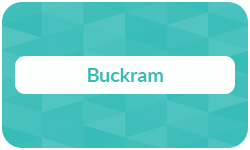
Buckram is a strong, versatile bookbinding material, valued for its durability and texture. While commercial buckram offers a premium finish for professional projects, DIY versions can also be made at home, offering a cost-effective alternative for personal projects. In this article, we’ll explore the types, their uses in bookbinding, and provide a step-by-step guide on how to make them yourself.
Definition: Buckram
Buckram is a stiffened fabric, commonly made from cotton or linen, widely used in bookbinding for its durability and structured finish. It is then coated or impregnated with starch, glue, or other stiffening substances to provide the rigidity necessary to protect and support book covers. Thanks to this treatment, buckram maintains its shape and withstands regular handling.
Etymology
The term “buckram” dates back to the Middle Ages, originally spelled “bokeram,” referring to fine cotton cloth. It is also connected to the Old French word “bouquerant,” the Spanish term “bucarán,” and possibly the Italian “bucherame,” all of which share similarities in meaning.
The exact origin remains uncertain, and while some suggest a connection to the city of Bokhara in Central Asia, this theory is deemed unlikely by sources such as the Oxford English Dictionary. The various spellings of the term have further contributed to the confusion surrounding its true origin.
Copy and print from $0.10
- High-quality copies & prints for any project
- Vibrant color prints or sharp black & white prints
- Online copy and print services delivered straight to your door
Learn more!
Uses
From bookbinding to creative DIY endeavors, buckram offers the perfect balance of structure and flexibility. Below are some of its key uses.
Professional uses
Buckram fabric is essential for various industries where durability and structure are key.
Buckram is widely used in creating stiff and durable book covers, ensuring a polished finish and long-lasting protection for academic, art, and special edition books.
It is used to stiffen collars, bodices, and other parts of costumes, ensuring they maintain their shape. Buckram is also used for making lightweight, durable theatrical props.
In curtain headers, particularly for pleated drapes, buckram provides the necessary stiffness to help the pleats hold their shape and reinforces the weight-bearing top of curtains.
This refers to the craft of designing and making hats. Buckram is used as a base material in millinery to shape hats, providing structure to the brims and crowns, and preventing drooping.
It can add structure to luxury packaging, purses, and totes, as well as provide stability for embroidery projects and home décor items like lampshades.
Personal uses
For individual consumers, buckram is a versatile material for custom and creative projects.
Many use buckram for creating personalized notebooks, journals, and thesis bindings, providing a professional look and feel.
DIY enthusiasts often turn to buckram for projects like custom tote bags, wallets, and other accessories where additional structure is needed.
It serves as a backing fabric for embroidery, providing a stable base for stitching intricate designs.
Buckram is perfect for various home projects, such as fabric panels and decorative items that require stiffness and support, offering a high-end finish at home.
Types
Buckram fabric comes in various types, each suited to different applications.
Standard buckram
This is the most common and widely used type. It is typically chosen for hardcover books and standard bookbinding projects due to its durability and clean, classic appearance. This type is perfect for publishers and bookbinders seeking a reliable, sturdy material.
Decorative buckram
This offers enhanced finishes, colors, and textures. This variation is ideal for high-end publications and special editions, providing a more customized and polished look. Decorative buckram allows for additional design options such as embossing or foiling, making it popular for luxury books and collector’s editions.
Pre-coated buckram
This is a more modern type that comes with pre-applied stiffening agents, which makes it easier to work with. It is a great choice for DIY projects or for those who need a more straightforward application without the hassle of additional treatment.
Other types
In addition to these, there are also woven, nonwoven, and paper variations.
- Woven buckram is made from woven fabrics and is particularly strong, offering added durability for heavy books or high-use publications.
- On the other hand, nonwoven buckram is produced by bonding fibers together using heat or chemicals, providing a lighter and more flexible option.
- Paper buckram, a more cost-effective choice, combines the texture and appearance of traditional buckram with the affordability of paper.
➜ These various types offer different characteristics, allowing both professionals and consumers to choose the right buckram for their specific needs, whether for high-quality premium projects or more affordable everyday applications.
Composition
Buckram fabric is typically made from natural fibers like cotton or linen, which are chosen for their strength and texture. These materials are treated with stiffening agents to give buckram its characteristic rigidity and durability. Historically, gum arabic, tragacanth, and wheat starch paste were commonly used as stiffening agents to add structure to the fabric. This process ensured that buckram could maintain its form and provide support for book covers and other applications.
The composition of buckram directly affects its durability, texture, and finish. The use of natural fibers results in a sturdy, tactile surface, while the stiffening agents ensure that the material holds its shape over time. In modern buckram, synthetic fibers and nonwoven materials are sometimes incorporated, and the fabric may be coated with acrylic or other sizing agents for enhanced strength and flexibility. These modern variations allow for greater versatility in buckram’s applications, from bookbinding to fashion and home décor.
The choice of materials also influences the cost and quality of buckram.
➜ Traditional buckram tends to be more expensive due to the labor-intensive process required to stiffen it.
➜ In contrast, newer forms of buckram are generally more affordable but may offer different qualities.
Advantages & disadvantages
Like any material, it has its limitations. Here’s a breakdown of the key advantages and disadvantages.
Pros
- When used in bookbinding, buckram provides crisp, precise results for foil stamping, which is ideal for custom designs and high-end publications.
- Buckram excels at holding its shape, which makes it ideal for structured applications. This ability to maintain form is especially beneficial for projects requiring structural integrity.
- Some types are treated to be water-resistant, adding another layer of versatility. For example, pyroxylin-impregnated buckram is favored in bookbinding for its ability to resist water.
- Available in a range of weights and thicknesses, buckram comes in both one-ply (light, medium, heavy) and two-ply versions, making it suitable for a wide variety of project requirements.
- Known for its resistance to wear and tear, buckram is highly durable, particularly when treated with sizing agents. This makes it a great choice for projects that need to withstand frequent handling.
- Buckram can be easily cut and shaped without compromising its stiffness. For millinery applications, it can even be softened with water, molded over a hat block, and then dried to maintain its hard shape.
Cons
- The texture of buckram can affect the quality of foil or blind stamping, leaving a less distinct impression due to its textured surface.
- The stiffness of buckram can make it challenging to sew, often requiring special equipment, a sharp needle, and increased stitch length.
- Buckram can develop creases or dents that may require additional care, such as steaming or gentle pressing, to restore its smooth finish.
- Buckram’s rigidity is a disadvantage when flexibility is needed. It is not suitable for applications that require soft draping or fluid movement.
- Many types of buckram are not washable because the stiffening agents can be compromised by washing. As a result, dry cleaning is often recommended.
- While buckram has historical applications, certain modern versions or synthetic stiffening agents may not meet the exact standards required for historical costuming projects.
➜ The specific pros and cons can vary depending on the type of buckram and
the intended application.
Affordable document printing from $0.10
- Crisp text, vibrant colors & multiple paper choices
- No need to visit a shop; simply order online anytime
- Print documents, copies & reports with professional quality
Learn more!
Alternatives
When searching for alternatives to buckram fabric, the following materials offer various benefits depending on your project’s needs:
Alternative
Material
Benefits
Fosshape
Heat-activated fabric
Lightweight yet stiff, ideal for theatrical props and headpieces. Durable structures needing lightweight.
Fabric stiffened with cornstarch or gum-based solutions
Cost-effective DIY option, flexible yet sturdy for historical costuming and custom projects.
Mesh fabric
Lighter than buckram, maintains the shape of brims and crowns for hats while offering strong support.
Phifertex
Vinyl-coated polyester fiber
Water- and heat-resistant, ideal for millinery and moisture-exposed projects needing durability.
Plastic canvas
Craft material
Easy to work with, popular for hat making and decorative DIY projects, provides sufficient structure.
Stiff interfacing
(e.g., pellon)Synthetic stiffening material
Affordable stiffening material, used in garments and crafting, offering flexibility for less durable needs.
Sinamay
Natural fiber fabric
Delicate yet firm structure, ideal for hats and maintaining shape in millinery.
Toile
Traditional tailoring fabric
Flexible yet stiff, perfect for costume design and garments requiring some flexibility.
Considerations
When choosing an alternative, consider the following factors:
Stiffness
Choose one that matches the desired outcome for your project.
Availability
Some materials are easy to find, while others may require specialized sourcing.
Washability
Some are not washable, while others can be cleaned easily.
Composition
Consider the environmental impact and sustainability of the substitute.
Choosing the right material
When selecting the right material for your project, several factors must be considered, whether you’re a business or a consumer.
Here’s a breakdown of key decision-making elements:
- Consider how long the material will last and whether it can withstand frequent handling. Buckram fabric, for example, excels in durability, making it ideal for books or products that will be used regularly.
- Budget is always a key factor. While buckram offers long-lasting quality, alternatives like cloth or paperboard may be more affordable for cost-conscious consumers or businesses working on a tight budget.
- The look and feel of the material are just as important. Buckram offers a smooth texture that can be embossed or foiled for custom designs, making it ideal for high-end applications, such as special edition books or luxury packaging.
Comparison to other materials
While alternatives like leather provide strength, they are often more expensive, making buckram a great middle ground for those seeking a professional finish at a lower cost.
On the other hand, materials like paperboard may offer cost savings but lack the same longevity and quality finish that buckram fabric provides.
Bookbinding considerations
Choosing the right material for bookbinding depends on the intended use.
- For thesis binding, buckram is an excellent option due to its professional look, durability, and ability to withstand handling over time.
- For luxury art book publishing, decorative buckram offers enhanced finishes, colors, and textures that elevate the overall aesthetic.
DIY buckram tutorial
Creating your own buckram fabric at home is both cost-effective and rewarding. This stiffened fabric is ideal for millinery, historical costuming, and bookbinding projects. Below is a step-by-step guide using readily available materials.
Materials needed
Fabric
➜ Twill, aida cloth, cotton canvas
Stiffening agent
Tools
Step-by-step instructions

Prepare the starch or gum solution
For cornstarch solution:
- Mix 4 tablespoons of cornstarch with 1 cup of water in a saucepan.
- Whisk continuously over medium heat until it becomes clear and thickens.
For gum tragacanth solution (powdered):
- Mix 1–2 tablespoons of powdered gum tragacanth with 1 cup of cold water.
- Stir well and allow it to sit for 12–24 hours to hydrate and thicken.
- Optionally, heat the mixture gently to achieve the desired consistency.
For gum tragacanth solution (stones):
- Soak the gum tragacanth stones in warm water for 12–24 hours.
- After soaking, crush them into a fine powder and mix with water as you would with the powdered version.

Apply the stiffening solution to the fabric
- Once the solution is ready, lay the fabric flat on a clean surface.
- Use a brush to apply the solution across the fabric, ensuring it is fully coated.
- This method ensures even distribution without saturating the fabric too much.

Remove excess starch or gum
- After applying the stiffening solution, gently press the fabric with a clean towel or your hands to remove any excess starch or gum.
- This ensures an even coating and prevents the fabric from becoming too soggy, which could lead to an uneven texture or unwanted stiffness.
- Work slowly and carefully, keeping the fabric flat to prevent creases or wrinkles from forming.
- Lightly pull or stretch the fabric to ensure it stays smooth before it dries.

Dry and iron the fabric
- Place the starched fabric between a kitchen towel or hang it dry.
- Afterward, you can iron it, depending on the desired stiffness and convenience.
- This will help retain its stiffened shape, making it perfect for your projects.
FAQs
Buckram is a stiffened fabric, typically made from cotton or linen, that is used in bookbinding, millinery, and costume design.
Buckram is commonly used for creating durable book covers, structured hats, and stiffened parts of garments like collars and bodices.
Alternatives include leather, cloth, paperboard, and synthetic materials like Phifertex or nylon mesh, depending on the project.
In English, buckram refers to a stiffened fabric used in various applications.
Some types of buckram are water-resistant, but most can be damaged if exposed to water. It is generally recommended to keep it dry.